Notable Alumni
 Paul Ignatus ’42
Paul Ignatus ’42
Paul was born in Glendale, California, to Armenian parents. After graduating from the University of Southern California in 1942, Ignatius was accepted for a master’s program with Harvard Business School in Boston, Massachusetts. The program carried the prerequisite of commissioning in the Army or Navy before attendance. In August of 1942, he was commissioned as an ensign in naval ordnance.
With the completion of his service on the USS Manila Bay (CVE-61) and the termination of World War II, Ignatius separated from the Naval service in 1946. He then attended Harvard Business School where he received a Master of Business Administration. Upon graduating, Ignatius became a research assistant and ultimately an instructor in business administration for the school. This eventually led to his involvement in Harbridge House, a consulting and research firm that produced teaching materials for civilian organizations and the government.
Working in both the John F. Kennedy and Lyndon B. Johnson administrations, Ignatius became the Assistant Secretary of the Army and later the Under Secretary of the Army. In 1965, he became the Assistant Secretary of Defense and then the Secretary of the Navy in 1967. Following his government service, he became president of The Washington Post then served as president of the Air Transport Association, followed by Chairman of the Board for the Logistics Management Institute.

The United States Navy honored Ignatius by naming a destroyer after him, the USS Paul Ignatius (DDG-117), an Arleigh Burke-class destroyer. Paul Ignatius is the second of eight planned Flight IIA “technology insertion” ships, which contains elements of the Flight III ships. Paul Ignatius was launched on 12 November 2016, and was christened on 8 April 2017. She was commissioned on 27 July 2019 at Port Everglades in Fort Lauderdale, Florida. The ship was sponsored by Ignatius’ wife Nancy before her death and that role was taken over by their granddaughter, Dr. Elisa Ignatius. Paul Ignatius is homeported in Rota, Spain.
Secretary Ignatius turned 100 on November 11, 2020. He currently lives in Washington D.C.
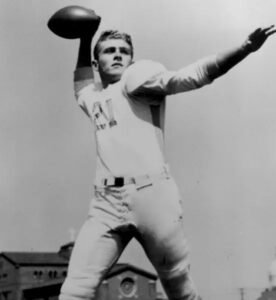 Jim Hardy ’46
Jim Hardy ’46
Hardy lettered three seasons (1942-44) at quarterback and defensive back for USC, starting his final two seasons and leading the Trojans to a pair of shutout Rose Bowl victories. He threw three touchdown passes against Washington in a 29-0 victory in the 1944 Rose Bowl, then passed for two TDs and ran for a third to earn MVP honors in a 25-0 win over Tennessee in the 1945 Rose Bowl. He led the Trojans in passing, total offense and punting both of those seasons and also in scoring in 1942. He captained USC as a 1944 senior while setting school season passing records for completions (58), yardage (739) and touchdowns (10) and earning All-Pacific Coast Conference honors. As a defensive back, he had 13 career interceptions.
He also played third base for the USC baseball team for three years (1944-46), earning All-California Intercollegiate Baseball Association honors in 1944 and helping the Trojans to the league title in 1946.
Hardy, who came to USC from Fairfax High in Los Angeles, was inducted into the USC Athletic Hall of Fame in 1999 and the Rose Bowl Hall of Fame in 1994.
The eighth pick in the first round of the 1945 NFL Draft by the Washington Redskins, he spent seven seasons as a quarterback in the NFL and threw for 5,690 yards with 54 TDs. After a stint in the Navy, he was with the Rams (1946-48), Chicago Cardinals (1949-51) and Detroit Lions (1952). He was a member of the inaugural Los Angeles Rams team in 1946 and the NFL champion Lions in 1952. He was named to the Pro Bowl in 1950. While with the Cardinals, he set an NFL game record by throwing eight interceptions against the Philadelphia Eagles in 1950, a mark that has yet to be broken. The following week against the Baltimore Colts, he rebounded to throw six TDs.
After a business career, he was the general manager of the ABA’s Los Angeles Stars (1969-70) and then held a similar title at the Los Angeles Memorial Coliseum (1973-86), including when the Coliseum hosted the 1984 Summer Olympics.
Hardy was a lifelong USC football fan who saw his first Trojan game in 1931 at age eight and attended nearly every home game since then (except when he was in the NFL). He was so devoted that, until two years ago, he would drive himself two hours from the desert to USC once a week in the fall to watch the Trojans practice. He also attended more than 80 Rose Bowl games, including all but the first two of USC’s 34 Rose Bowl appearances.
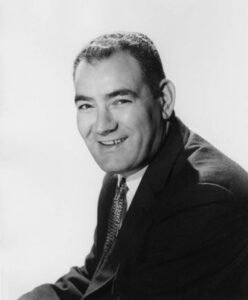 John Ferraro ’48
John Ferraro ’48
Los Angeles City Councilman. Ferraro attended University of Southern California on a football scholarship. Standing 6 feet 5 inches, he earned the nickname ‘Big John’ and was named an All-American in 1944 and 1947. He played in three Rose Bowls and three decades later, was inducted into the National Football Foundation and College Hall of Fame.
During World War II, he enlisted in the Naval Reserve, serving on a tanker with Warren Christopher, who sparked Ferraro’s interest in politics during long early-morning discussions when they were stationed in the Bay Area. After the war, Ferraro finished college and with a degree in business administration from USC, established a lucrative insurance business in Los Angeles. Through shrewd real estate and stock investments, he became a millionaire, but maintained an interest in politics.
He served on the Police Commission for 13 years, starting in 1953 and in 1966, was appointed by Mayor Sam Yorty to fill a vacancy on the City Council created by the death of Councilman Harold A. Henry for the 4th Council District. The next year he ran for election and won his first four-year term and would go on to be re-elected 9 more times. A politician who often was awkward under the spotlight, Ferraro was more skillful as a behind-the-scenes deal maker, he built a reputation as a peacemaker, soothing relations on and off the frequently fractious body.
He played a major role in bringing the Olympics to Los Angeles, serving on early committees that were trying to attract the Games. He also played a key role in bringing the Democratic National Convention to Los Angeles in 2000 and spurred the renovation of the Los Angeles Zoo. Ferraro was president of the City Council at the time of his death from cancer. The Council Chambers are named in his honor as is the John Ferraro building on Hope street, formerly the Dept. of Water and Power.
 Chapman B. Cox ’62
Chapman B. Cox ’62
Secretary Cox was born in Ohio; he attended public schools in Indiana, Colorado, and California. He attended the University of Southern California, graduating with a B.A. in 1962; and Harvard Law School, graduating with a J.D. in 1965.
Cox joined the United States Marine Corps as an officer in 1965, seeing duty in the Vietnam War. Upon leaving the Marine Corps in 1968, he practiced law in California and Colorado. During this period, he became managing partner of Sherman & Howard; taught as an adjunct professor at the University of Colorado School of Law; and was a member of the Board of Governors of the Colorado Bar Association.
During the administration of President Ronald Reagan (1981-1989), Cox served as Deputy Assistant Secretary of the Navy (Logistics), Assistant Secretary of the Navy (Manpower and Reserve Affairs), General Counsel of the Department of Defense and Assistant Secretary of Defense (Force Management and Personnel). Following his government service, Cox became president and CEO of the USO, followed by a role as Senior VP of Lockheed Martin IPMS. Secretary Cox currently resides in Colorado Springs, CO.
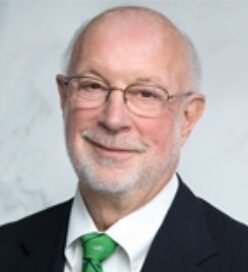 Eddie Tannenbaum ’62
Eddie Tannenbaum ’62
Traveler first made an appearance at USC football games in 1961 (in the home opener versus Georgia Tech). Bob Jani, then USC’s director of special events, and Eddie Tannenbaum, then a junior at USC, had spotted Richard Saukko riding his white horse, Traveler I, in the 1961 Rose Parade. They persuaded Saukko to ride his white horse around the Coliseum during USC games, serving as a mascot. Ever since, whenever USC scores, the band plays “Conquest” and Traveler gallops around the Coliseum.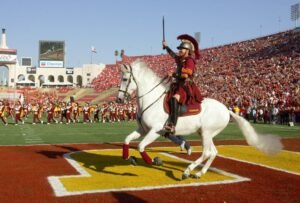
13 NOV 2021: We celebrated Traveler’s 60th anniversary at the Los Angeles Memorial Coliseum, honoring former riders, owners, and Eddie Tannenbaum, the man who helped bring Traveler to USC in 1961. See the video.
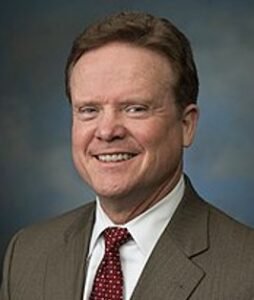 Jim Webb ’67
Jim Webb ’67
U.S. Senator from Virginia (2007-2013), Secretary of the Navy (1987-1988), Assistant Secretary of Defense (1984 to 1987). As a Marine platoon commander in Vietnam (1969), Jim was awarded the Navy Cross, Silver Star, 2 Bronze Stars and 2 Purple Hearts.
After graduating from high school in Bellevue, Nebraska, Jim Webb attended USC on a Naval ROTC scholarship from 1963 to 1964 and he also was a member of Delta Chi. In 1964, Webb accepted an appointment to the United States Naval Academy and was commissioned in 1968 as a 2nd Lieutenant in the Marine Corps. He attended the Officer Basic School shortly after leaving Annapolis, graduating first in his class. Following his return from Vietnam, Jim was eventually medically retired in 1972 due to his combat injuries.
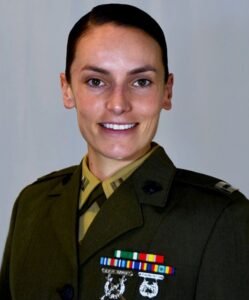 Marina Hierl, ’15
Marina Hierl, ’15
1st Lt Marina Hierl was the first female Marine Corps officer to complete the Infantry Officers Course in September 2017.
Hierl grew up in Bethlehem, Pennsylvania and worked on a horse farm, before attending the University of Southern California, the New York Times reported. “I wanted to do something important with my life,” she told the paper about her desire to join the Marines. “I wanted to be part of a group of people that would be willing to die for each other.”
After learning in 2013 that then-defense secretary Leon Panetta had lifted the ban on women in combat roles, Hierl told the Times that she knew she wanted to lead a platoon. “I didn’t think there was anything better in the Marine Corps I could do,” Hierl explained to the paper. But women weren’t allowed in the infantry until 2015, and the Marines were the last service to integrate women into combat units.
Hierl persevered, making history by becoming the first woman to graduate the Infantry Officer Course and then again as the Marines’ first female platoon commander, leading a team that is based out of Camp Pendleton, California. While dozens of women have attempted to complete the grueling Infantry Officer Course, only two have passed (by the end of 2018).
Subsequently, Marina was also the first female Marine Corps officer to lead a Combat Platoon (with Second Battalion, 4th Marines). The Times reported that while Hierl’s arrival at EchoCompany was at first met with skepticism, she is now respected among her fellow Marines and is focused on being recognized for her leadership, not trailblazing. “She’s one of us,” Lance Cpl. Kai Segura, 20, told the Times. Her platoon deployed to Northern Australia as part of the Marine Rotational Force — Darwin, which spends half of every year Down Under. Capt Hierl eventually ended up as the assistant operations officer for 3rd Battalion, 5th Marines.
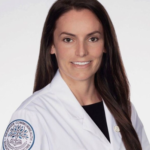
Marina left active duty in 2020 and is currently attending Geisinger Commonwealth School of Medicine as an Abigail Geisinger Scholar excited by service in primary care. The parallels: tremendous effort on behalf of her Marines, and now her future patients. She expects to graduate in 2026 as an MD.
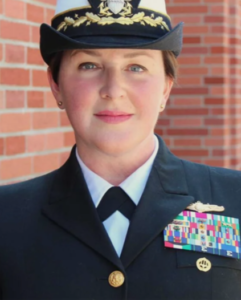 Courtney Foster, MBV, ’15
Courtney Foster, MBV, ’15
Trailblazing Navy officer finds new mission at USC Marshall. After almost three decades of military service, a Navy commander focuses on entrepreneurship.
Courtney Foster recalls driving to her second Navy assignment with SEAL Team 2 in Virginia Beach. It was 1993 and she had been selected as the first woman to ever join “The Teams” as an intelligence officer. “I thought, ‘What have I done? I’m going from the frying pan into the fire.’ On my first day, a bunch of fellow junior officers invited me out to lunch to a local place with great cheeseburgers. Of course, it was a strip club and they were testing me,” she recalled. Foster got through lunch just fine and quickly earned her team’s respect. “Remember, this was all before women were allowed on combatant ships, so I was a weird test case, I suppose,” Foster said.
At 48, Foster has devoted 27 years to military service, including three deployments to Iraq. She now serves as the Military Deputy for Irregular Warfare at the Naval Air Warfare Center Weapons Division at China Lake in the Mojave Desert.
Foster has four children and is married to Dave Foster, a former Marine Corps pilot and combat veteran who has been accepted into next year’s Master of Business for Veterans (MBV) cohort at the USC Marshall School of Business.
Over the past year [2017], Foster has driven two and a half hours each way from China Lake to USC once every two weeks, while earning her MBV. At USC Marshall, Foster said she’s been impressed by mentors who’ve been successful in a number of fields. “I’ve fallen in love with entrepreneurship,” Foster said. “I want to create an environment where people are excited to come to work every day.”
James Bogle, director of the MBV program, called her analytical, witty and compassionate. “Courtney is a superb professional whose experience in Naval Intelligence is apparent in the classroom,” Bogle said. “She also brings a level of toughness and creativity that should lend to her success as an entrepreneur.”
Foster, who hopes to make captain before she leaves the military, is ready for a final separation from service when the day comes. “I want to make a complete break,” she said. “I don’t want to be tied to the military industrial complex. I want to work for me and create an enterprise, and I want to do it applying the same high standards that I’ve found in the military.”
[In addition to her Master of Business for Veterans, Foster has also earned an MS in Entrepreneurship and Innovation from USC Marshall in 2021.]